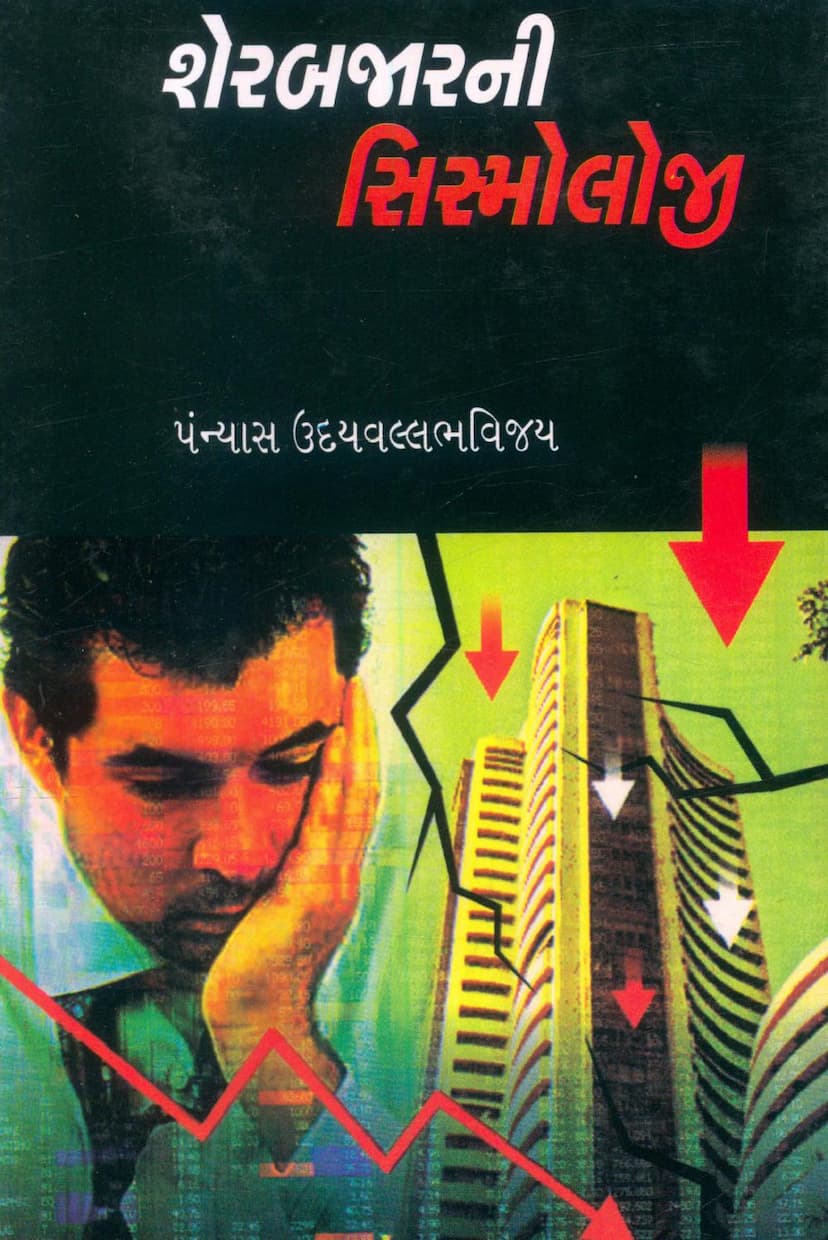Share Bazarni Sismology
Added to library: September 2, 2025

Summary
Here's a comprehensive summary of the Jain text "Share Bazarni Sismology" by Panyas Udayvallabhvijay, based on the provided pages:
Book Title: Share Bazarni Sismology (Seismology of the Stock Market) Author: Panyas Udayvallabhvijay Publisher: Pragna Prabodh Parivar
This book, "Share Bazarni Sismology," by Panyas Udayvallabhvijay, aims to explain the volatile and often destructive nature of the stock market by drawing parallels to seismic activities, like earthquakes. The author, known for weaving Jain philosophy with everyday life in his lectures and writings, addresses the recent turbulence in the stock market that has significantly impacted the middle class.
Core Themes and Arguments:
- Stock Market as an Earthquake: The central metaphor is the stock market's behavior being likened to seismic events. Chapters like "Bazar Camp" (Market Quake) vividly describe the devastating impact of stock market crashes, comparing them to the destruction caused by earthquakes. The author uses the 2001 Gujarat earthquake as an initial analogy for the sudden and catastrophic loss experienced in the stock market.
- Unpredictability and Risk: A significant portion of the book emphasizes the inherent unpredictability and extreme risk associated with the stock market. Unlike natural phenomena with somewhat predictable cycles (like seasons or tides), market fluctuations are portrayed as sudden, sharp, and without warning. The author argues that this lack of predictability is the core reason for its devastating nature.
- "Shortcuts Lead to Long Delays": The book critiques the allure of quick wealth through the stock market, portraying it as a dangerous shortcut. The analogy of choosing a rough, unpaved "short road" over a longer, safer main road highlights how the pursuit of quick gains often leads to more hardship, time loss, and damage.
- Greed and Speculation: The author strongly criticizes greed and speculation as the primary drivers of people's downfall in the stock market. He uses metaphors like "greed is a trench where adding soil increases its depth" to illustrate how insatiable desire leads to ruin. The book warns against the "instant gratification" mentality that fuels speculative trading.
- Jain Ethical Perspective: The book aligns the stock market with principles of righteous conduct as defined in Jainism. It questions whether businesses that cause widespread harm, are disreputable, financed through unethical means, or manipulate prices are considered "uchit vyavsay" (righteous profession). The author argues that the stock market often fails these ethical tests.
- Psychological Impact: The book delves into the significant psychological toll the stock market takes on individuals. It highlights increased stress, anxiety, sleeplessness, loss of appetite, irritability, and the exacerbation of health conditions like blood pressure and diabetes due to the constant uncertainty and potential losses. The author emphasizes that mental well-being is a greater asset than financial gain.
- The Illusion of Wealth: The author describes the stock market as a place where fortunes can be made and lost in mere moments, turning a comfortable life into destitution. He uses analogies like a "black hole" or a "Bermuda Triangle" to describe how investments can disappear without a trace.
- "Reverse Installment Method": This concept highlights the dangerous practice in the stock market where one earns through installment-like gains and then loses everything in a single blow, effectively reversing the payment process.
- Critique of "Easy Money": The book consistently warns against the temptation of earning money without hard work or "sweat." It argues that such easy gains devalue labor and lead to a detachment from the true value of money.
- Loss of Steadiness and Well-being: The author argues that participation in the stock market erodes mental peace, family harmony, reputation, and health. He uses the analogy of the Mahabharata dice game where the Pandavas not only lost their wealth but also their beloved Draupadi, symbolizing the loss of precious aspects of life.
- Importance of Savings and Contentment: The book champions the virtues of saving and contentment. Savings are presented as a safety net for future uncertainties, akin to a "breath for tomorrow." Contentment is described as a "seatbelt" essential for navigating life safely.
- The Danger of Blind Investment: The author criticizes the tendency of people, particularly newcomers, to invest without adequate knowledge, research, or understanding of the market's complexities. He likens this to entering deep water without knowing how to swim.
- Ethical Investment: The book implicitly encourages investors to consider the ethical implications of their investments, suggesting caution against companies involved in harmful activities, even if indirectly.
- A Call for Awareness and Caution: Ultimately, "Share Bazarni Sismology" serves as a stark warning and a call for awareness regarding the immense risks and potential for ruin in the stock market. It urges readers to approach such investments with extreme caution, prioritize mental and physical well-being, and cultivate contentment rather than chasing speculative gains.
In essence, Panyas Udayvallabhvijay uses the powerful imagery of seismic events to illustrate the destructive potential of the stock market, urging readers to exercise prudence, ethical awareness, and a focus on inner peace and stability over the alluring but often treacherous pursuit of quick wealth.